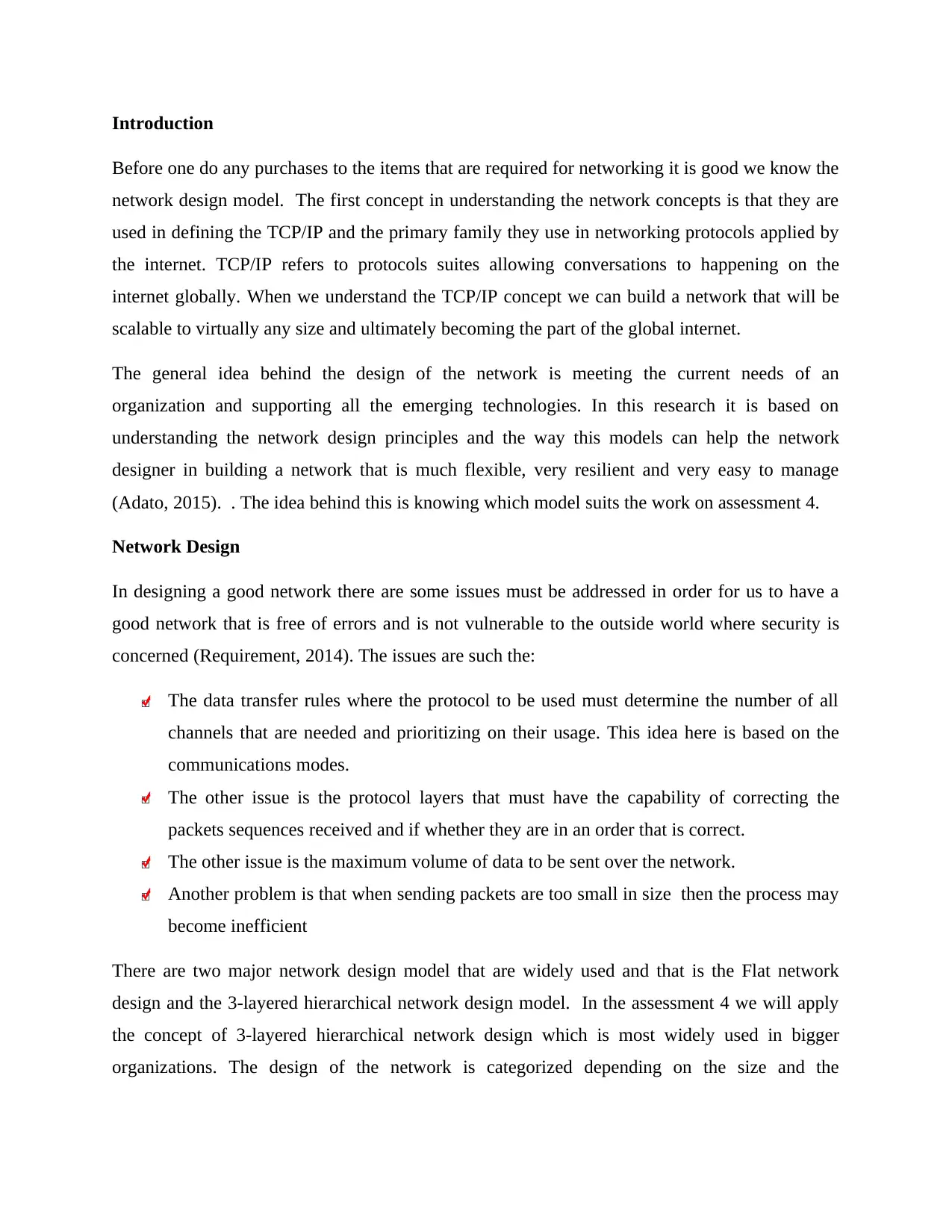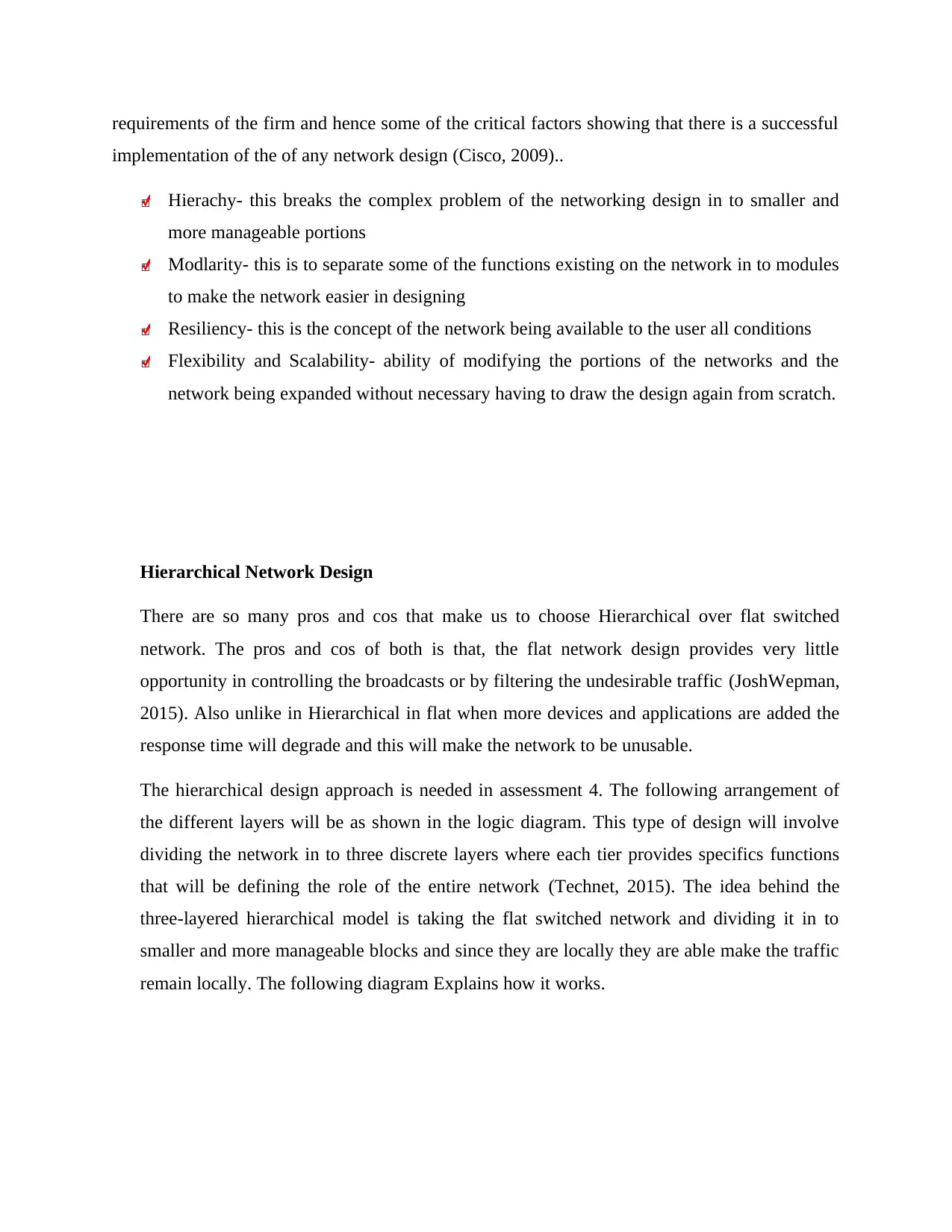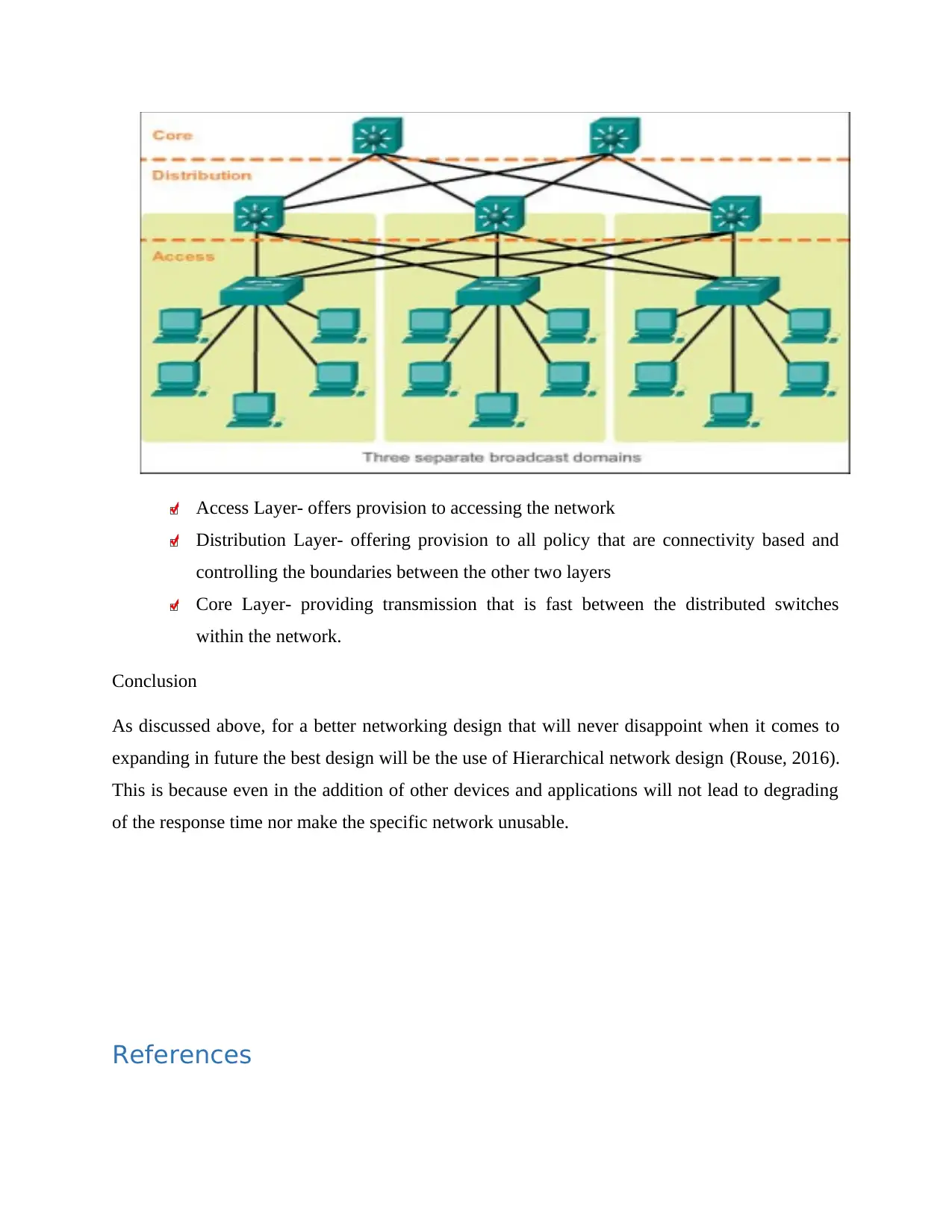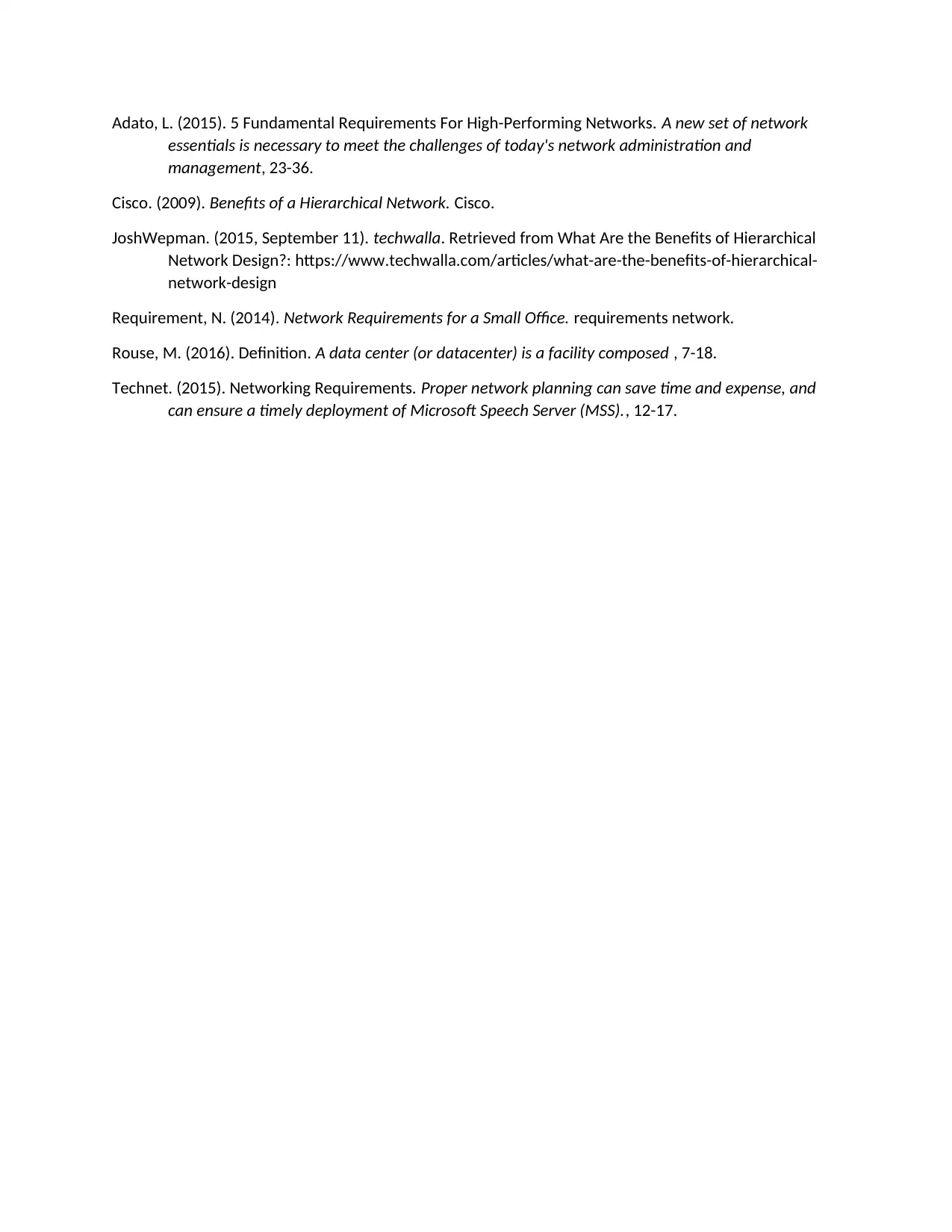Assessment 4: Network Design Principles and Models
VerifiedAdded on 2021/06/14
|4
|958
|35
Report
AI Summary
This report explores network design principles, focusing on the comparison between hierarchical and flat network models. It begins with an introduction to network design concepts, including TCP/IP and its role in building scalable networks. The report then addresses key issues in network design, such as data transfer rules, protocol layers, and data volume. It highlights two major network design models: flat and three-layered hierarchical. The primary focus is on the three-layered hierarchical network design, widely used in larger organizations, emphasizing its advantages in terms of hierarchy, modularity, resiliency, flexibility, and scalability. The report contrasts hierarchical design with flat network design, detailing the pros and cons of each. Finally, it describes the three layers of the hierarchical model: access, distribution, and core, and concludes that hierarchical network design is the better choice for future network expansion, as it avoids performance degradation with added devices and applications.
1 out of 4











![[object Object]](/_next/static/media/star-bottom.7253800d.svg)